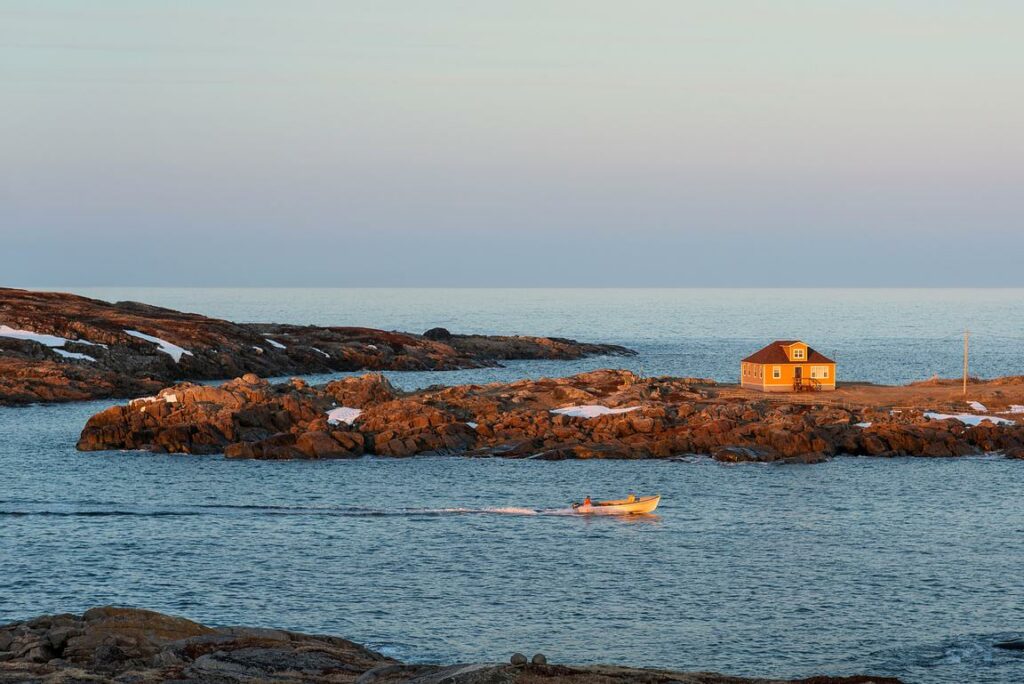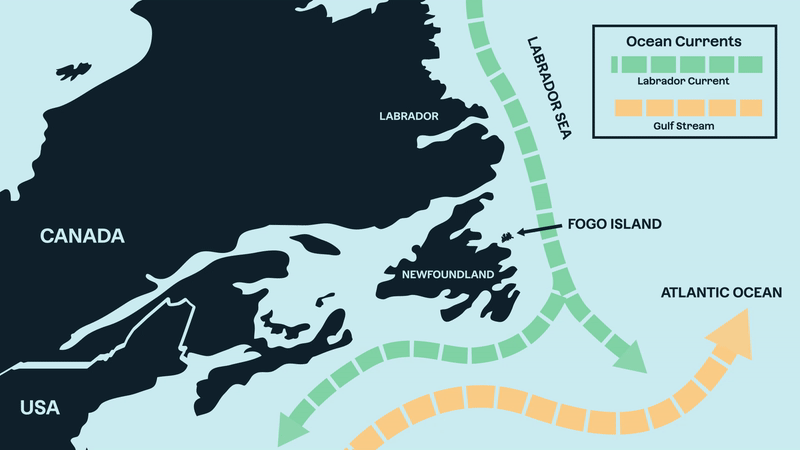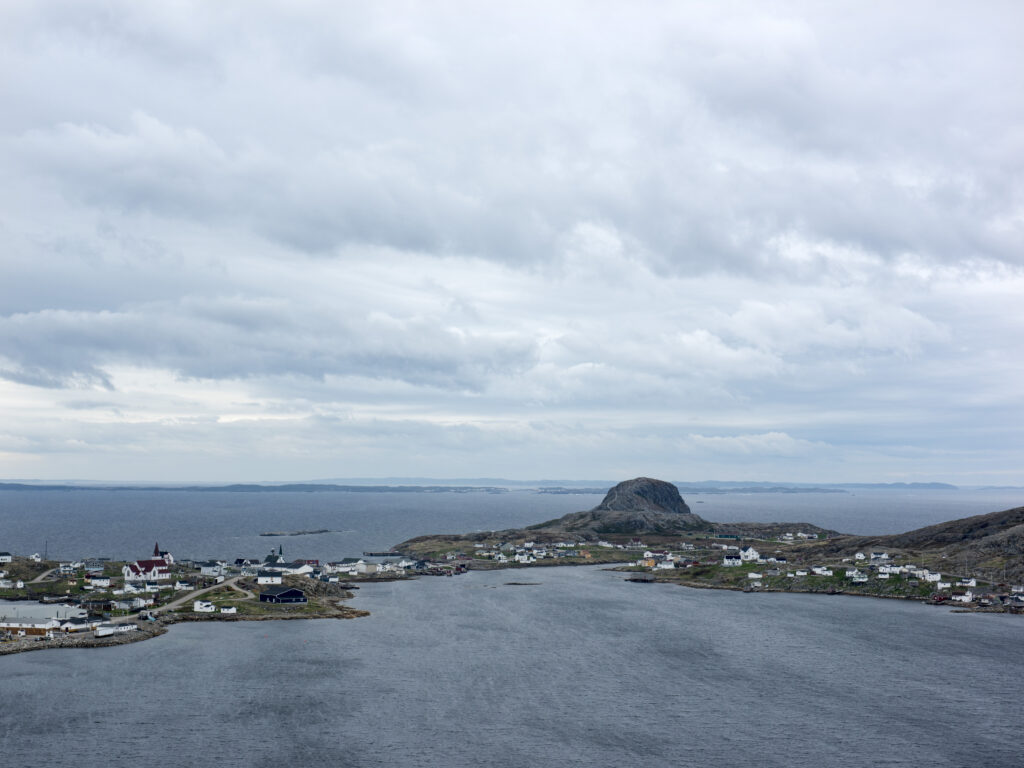
On Fogo Island our geographic context is strongly informed by the Labrador Current.
Positioned in the pathway of this current, our island has developed a culture and way of life (from the foods we eat to the livelihoods we’ve sustained to the traditions we love) that is deeply rooted in our relationship to the waters around us.
As with any relationship there are both challenges and benefits. The strong winds and colder temperatures that move across our landscape result in a shorter outdoor growing season; this can be contrasted with the abundance of marine life that the current supports – the primary reason people have settled here for centuries.
The Influence of the Current
Whether you live in the direct pathway of the Labrador Current or not, its influence is significant to our global health.
Considered a distinct ecosystem, the Labrador Current helps keep the world’s oceans alive. Cold winter temperatures in the Labrador Sea are responsible for pushing oxygen-rich surface waters to depths far below the ocean’s top layer where they are dispersed by deep boundary currents. These oxygenated waters work in similar ways to our bloodstream – feeding oxygen-rich waters to the Arctic, Pacific, and Indian Oceans – giving context to the Labrador Current’s moniker as “a lung of the ocean.”
Crucially, this oxygen stream supports marine life around the world, that in turn supports human life. On Fogo Island, it enables our traditional and primary livelihood: the fishery.

Collecting Data for Academic Research
As more revelations are made about the importance of this cold current and its influence on other oceans globally, our waters have become a significant area of research. Scientists are especially keen to understand how climate change is altering the current both through an increase in temperature and wind change. At the local level – community members and fishers are keen to know what warming waters will mean for the fishery as more species begin to migrate.
One pillar of our Environmental Stewardship work on Fogo Island has us partnering with the Department of Fisheries and Oceans and the Marine Institute at Memorial University to support academic research geared around tracking changes in our local waters. A key initiative to support this goal is Community Science – a collaborative community-based approach to building up scientific knowledge by employing trained community members who can bring their background lived experience (cultural, industrial, environmental) to each project. In rural and remote locations, where it is not always easy to bring in scientists for study, community members are bridging the gap.
Recent projects on Fogo Island in partnership with community members and academic partners include ice tracking and species monitoring; both of which contribute to our understanding of changes in our local waters year-over-year.

“We thought we were one of the four corners of the world; turns out we are at the centre.”
Each year, during the onset of summer, Fogo Islanders bear witness to a changing climate through an experience of “Iceberg Alley.” The parade of icebergs that make their way down from glaciers situated along the coast of Greenland – via the Labrador Current – are a seasonal event; in recent years, however, it is clear to residents that there are significant fluctuations afoot. These fluctuations include increased glacial melt and a prolonged or sometimes negligible iceberg season.
This year for example, the season stretched from February (very early) to July (starting to get late). An increase in glacial flow has an impact on everything from the duration of our fishing season to rising water levels along our coast.
While Fogo Island’s location at the edge of the North Atlantic Ocean has often earned it a reputation as remote, faraway – and a tongue in cheek title as ‘one of the four corners of the world’ – it is increasingly clear that coastal communities like Fogo Island are at the centre of the climate crisis, rather than off to the side.
It will be coastal communities like Fogo Island that continue to experience an outsized impact and be extremely vulnerable to the changes in climate that we are all observing globally. To raise awareness both locally and internationally, Shorefast launched an artwork by artist Liam Gillick in October 2022, known colloquially as The Fogo Island Red Weather Station. The station is both a scientific tool to collect data and an artwork that seeks to communicate the value of life and knowledge in this place.
Growing our Environmental Stewardship Work
The climate crisis can’t be confronted or resolved by any one community; it will take all of us working at different scales to begin to develop a unified way forward.
On Fogo Island we have been building the case for an Environmental Stewardship program that is multi-pronged in approach, reaches across disciplines, supports the culture of people whose lives and livelihoods are linked to the sea, and can be scaled to create connection and collaboration across many sectors, with a focus on replicability across Newfoundland and Atlantic Canada.
The Labrador Current is part of our life on Fogo Island; it’s significant to yours as well.
Read more about our Environmental Stewardship work.